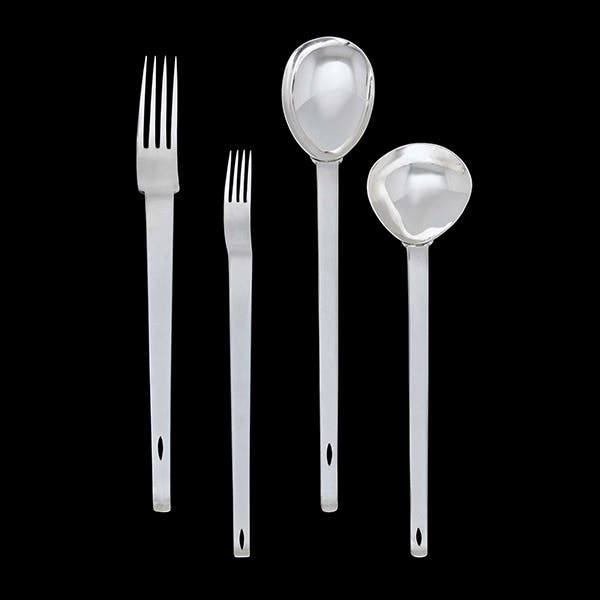Survival of the Symbolic: Social and cultural influence aplenty at antique markets
Using Scott Antique Markets as a font for inspiration and research, new contributor Jessica Munday explores how culturally significant symbols gain immortality through their appearances on historic objects.
By Jessica Munday
My recent trip to Atlanta left me spellbound and parched for greater knowledge. Strolling through Scott Antique Market’s world class facilities was like being in a
museum where the glass cases and velvet ropes had been removed for a more intimate examination of these historical period works that reflect social influences and cultural art.
To my satisfaction, many of the vendors were adept in the field of antiques, and several were experts in more than one category. As I am steadily gaining an eye and a feel for authenticity and value, vendors are lending a wealth of insight on period characteristics, early production history and worldly motif variation and style.
Recently, I have found that there are a handful of styles and traditions that I am naturally drawn to: 19th century Italian and French furniture, the unique complexities of antique gaming tables and all things Art Nouveau. A bonus is met when I can find these items with classical or pre-historic motifs and symbols. Scott Antique Markets offered more than a fix to a fetish; they are a major contributor to those social artifacts that have survived and can still be intensely studied, collected and revered.
The first motif that caught my eye was the stylized dolphin used on classic European furniture. Some scholars have argued that this is a representation of a mythical beast rather than a dolphin. It is likely that early representations of this motif by European artists were influenced by Asian imports. However, the diving dolphin motif was also very popular on French and Italian bookbinding in the 15th century. Slight variations can be seen with the progression of time, but it is still a steadfast and beautiful embellishment sought after by many collectors. Architectural historians consider the dolphins to symbolize swiftness, charity and love.
The next great motif that deserves mention is the Greek mythological Sphinx. In Greek literature, the Sphinx is described as having the head of a woman, the body of a lion and the wings of an eagle. The Sphinx is famous for her riddles, of which she would ask of any passerby. If the riddle could not be answered correctly, the Sphinx would devour them.
The riddle that the Sphinx is most famous for inquires: “What creature has one voice, but walks first on four legs, then on two, and finally on three?” The answer is Man, who begins his life by crawling, then by walking and as he ages uses the assistance of a cane.
A much older riddle asked by the Sphinx is: “Who are the two sisters in which one gives birth to the other, and in turn she then gives birth to the first?” The answer is night and day. This riddle reflects the significance of celestial concepts to ancient civilizations.
The piece pictured is especially interesting if we acknowledge that the original Sphinx comes from ancient Egypt and Persia, the version displayed is of Greek mythological origins, and it is carved in to a French country style dough table. The motif has survived through the rise and fall of civilizations, as well as religious influences. Centered between the two ornamental Sphinxes is the fleur-de-lis. The fleur-de-lis is a stylized lily that has traditionally represented French royalty.
One of the most impressive pieces was a circa 1860 Italian library table with angel and lion motifs. Both lions and angels are of Christian influence. The abundance of fruit splayed from the lion’s mouth is a representation of God’s goodness.
In most ancient cultures large cats are personifications of power associated with rulers. We see evidence of this from Bast in ancient Egypt to the revered Jaguar in South America. Most would agree that, in regards to Christianity, the lion is an earthly representation of Christ. Angels are often intermediaries between heaven and earth that act as protectors or guides. The four evangelists are also sometimes depicted with wings. Although it is difficult to interpret what the artists meant to portray exactly, it is unquestionably a reflection of ancient Christian mythology and lore.
Symbols are frequently used in society and are usually a representation of something
other than their literal meaning. In a sense they are a very real language; a nonverbal interpretation of perceptions, concepts and experiences of prior societies.
Some symbols can cross cultural boundaries carrying with them the same or very similar meanings, much like the Sphinx discussed earlier. However, other symbols, like dragons for example, have different meanings in different regions of the world. As the ethnic identity of the historical Emperors of China, the eastern dragon is commonly associated with power and strength. Therefore, in Asian countries, the dragon is respected and revered. Meanwhile, in Western folklore, dragons are malevolent and destructive. Generally, they are presented guarding coveted heaps of treasure.
Symbols are an important element of transformation and identity in every human landscape. Scott Antique Markets exhibits a collection of evidence in respect to our complex allegorical character as a species. In turn, these creations influence our lives with enriching connections to the past. Like the temporary collections that pass through a prominent museum, you never know what you are going to find or when you will find it. Unlike museums, however, when you shop the Scott Antique Markets, you not only have the liberty to explore the diverse aspects of antiques, you also have the rare opportunity to acquire exceptionally limited pieces at museum quality and interest.








